In 1924, three years after the end of the Irish War of Independence, the German company Siemens presented its initial proposal for the Shannon Hydro-Electric Scheme to the government of the newly established Irish Free State. The Ardnacrusha Power Station opened in Co. Clare five years later, on 29 July 1929. It had cost the state around 20 per cent of its annual budget, was the first national integrated electricity system anywhere in the world, and generated enough electricity to power all of Ireland. It was a major feat for a young state seeking to assert its status as a self-sufficient, future-looking society and a force to be reckoned with on the global stage.
Today, Ardnacrusha remains an active hydroelectric power station under the management of the Republic of Ireland’s Electricity Supply Board (ESB), although the percentage of Irish homes it supplies with electricity is now closer to two per cent. It is also the site of the Ardnacrusha Experience, a visitor centre that recently opened to the public. I visited Ardnacrusha in April, a detour on a trip to the nearby city of Limerick, where the 38th edition of Ireland’s contemporary art biennial EVA International had just opened. We toured the station’s original control room, turbine hall, archive room, and gallery – a small room that is home to the ESB’s collection of pictures by the artist Seán Keating. From 1926, the Limerick-born artist had set up camp at the nearby Ardnacrusha site, producing a series of often plein air drawings and paintings documenting the construction of the dam and power plant.
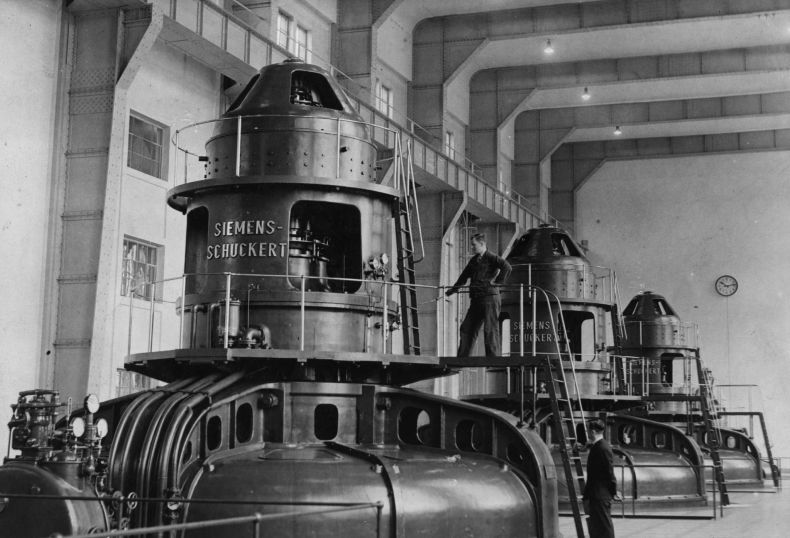
A section of the power house of the Shannon Scheme, near Limerick, Ireland. Photo: Fox Photos/Getty Images
On the occasion of my visit, a number of the works in the ESB’s Keating Gallery had been replaced by full-size framed prints. The originals were out on loan, at the Limerick City Gallery of Art, where Keating’s documents of the Shannon Scheme fill the opening space of EVA International. Several of the studies are almost abstract in their impressionistic depiction of the soil, rocks and hills at the construction site, broken up by the quasi-constructivist lines of man-made structures and machinery. The most famous work, however, the much-reproduced Night’s Candles Are Burnt Out (1928–29), is firmly representational, and symbolic, in its approach. Ardnacrusha provides the backdrop for a group of figures standing in the foreground of the painting – including a skeleton, a group of workers, a capitalist and a priest – each representing a different faction in what Keating described as his depiction of ‘the transition of Ireland from a country of ancient stagnation to a state of freedom and progress’.
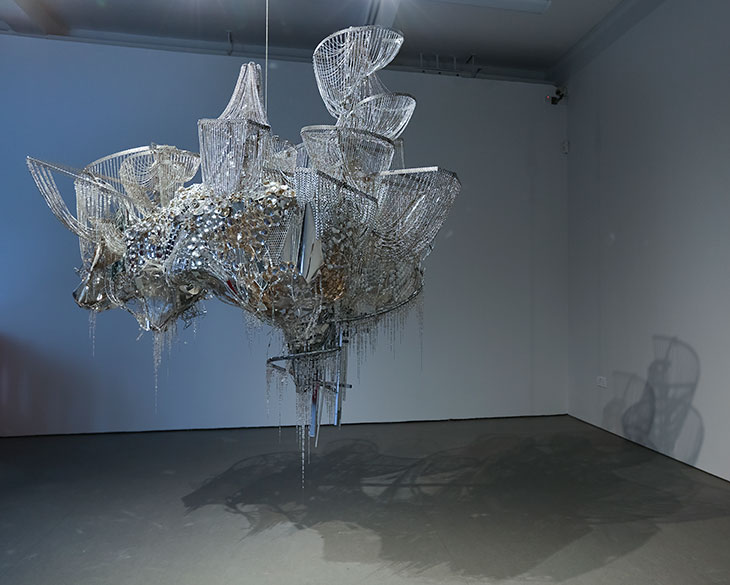
State of Reflection (2016), Lee Bul, installation view at the 38th EVA International 2018. Photo: Dierdre Power; courtesy EVA International 2018 and Galerie Thaddaeus Ropac
Keating’s paintings are an unexpected choice for introduction to an exhibition with a strong focus on recent, brand-new (and in-progress) work. But Seán Keating serves as much more than the literal entry point for EVA. The curator of this year’s edition, Inti Guerrero, has taken inspiration from Keating’s postcolonial celebration of technological might to bring together a transhistorical and international selection of works exploring different ideas of power: national, hydroelectric, or otherwise. Across Limerick City Gallery of Art and a number of more unusual venues, including the Hunt Museum and a former condensed milk factory, these various definitions of power thread their way through an otherwise disparate range of works, connected by an associative logic that is at times superficial and at others quite revelatory.
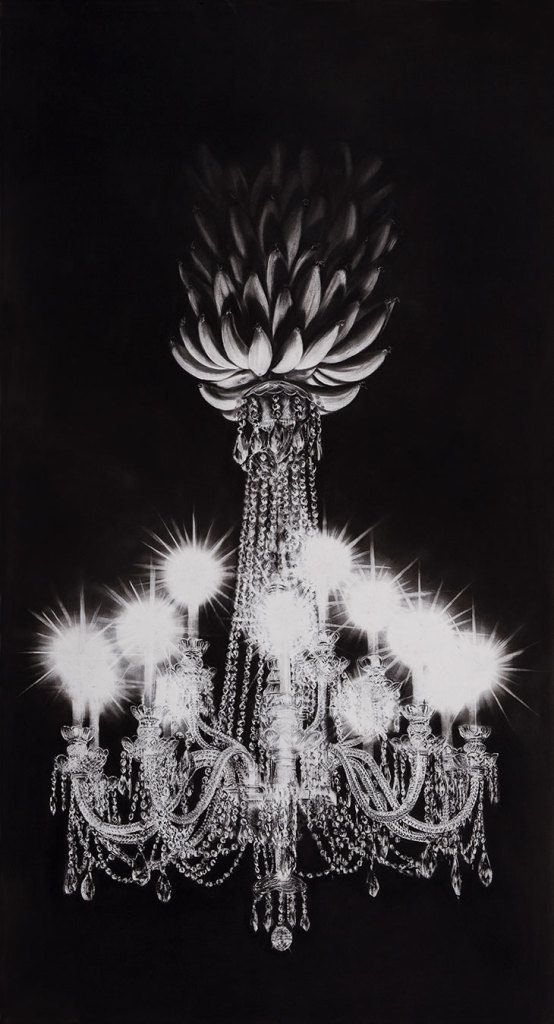
Apocalypse XXI (2016), Gonzalo Fuenmayor. Courtesy EVA International and the artist
On the one hand, I’m not sure how much can be gleaned from the grouping of a monumental chandelier-like suspended sculpture by Lee Bul alongside video documentation of Steven Cohen’s performance Chandelier (2001) and Gonzalo Fuenmayor’s photorealist charcoal drawing of a chandelier hanging from a banana cluster. Meanwhile, newly commissioned for the biennial, Malala Andrialavidrazana’s series of digitally composed collages of world maps, album covers and emblems printed on bank notes – including bridges and dams – provide a much more pertinent take on the relationship between infrastructure and national identity that is at the heart of Guerrero’s project.
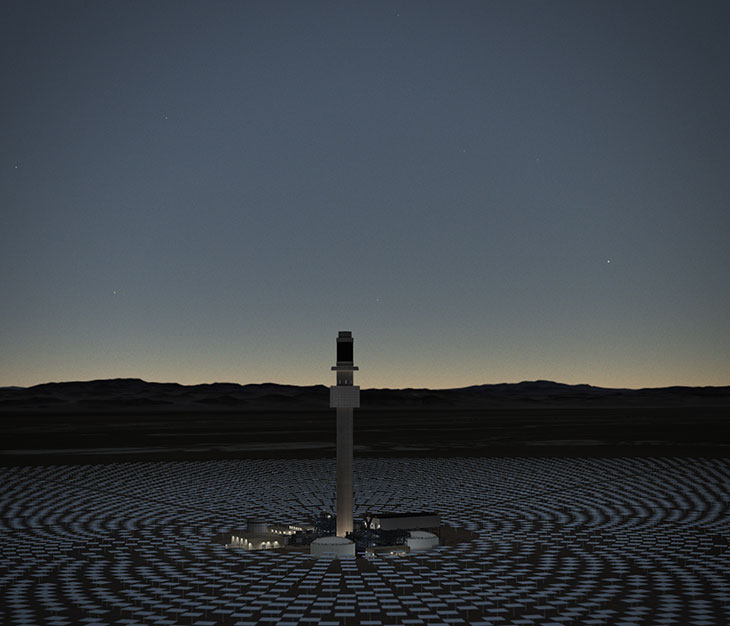
Solar Reserve (Tonopah, Nevada) (2014), John Gerrard. Courtesy the artist, Thomas Dane Gallery, London, Simon Preston Gallery, New York and EVA International
One of the more unusual aspects of EVA International is the continued existence of its open call process, which allows lesser-known artists to submit proposals and be exhibited alongside high-profile names. At Cleeve’s Condensed Milk Factory, we encounter Dominique Gonzalez-Foerster’s installation Brasília Hall, first presented in 1998, and John Gerrard’s vast computer simulation of a solar thermal power plant in the Nevada desert, alongside the ‘exhibition, archive and information hub’ of the Artists’ Campaign to Repeal the Eighth Amendment. The group was established in 2015 by four women – Cecily Brennan, Alice Maher, Eithne Jordan, and Paula Meehan – to promote awareness of the current restrictive reproductive laws in Ireland (ahead of a referendum on the issue to be held on 25 May). Videos documenting recitals of women’s stories submitted to the group are presented alongside bright banners designed to be carried at protests and marches such as the silent procession which took place at the launch of the biennial.

Artists’ Campaign to Repeal the Eighth Amendment, Repeal!, members Alice Maher, Rachel Fallon, Áine Phillips and Breda Mayock Photo: Alison Laredo; courtesy the artist and EVA International
Listening to the stories, and watching the artists and their supporters process through the streets of Limerick, it’s difficult not to be moved by the group’s passion and dedication. On the face of it, there seems little that connects this work to the broader themes of the exhibition, which it somewhat threatens to eclipse in its urgent timeliness. And yet, as a document of a moment of national reckoning, a country on the possible cusp of progress, it’s the perfect contemporary counterpart to Seán Keating’s early 20th-century chronicle of the Irish Free State.
‘EVA International: Ireland’s Biennial’ runs until 8 July, Limerick City.

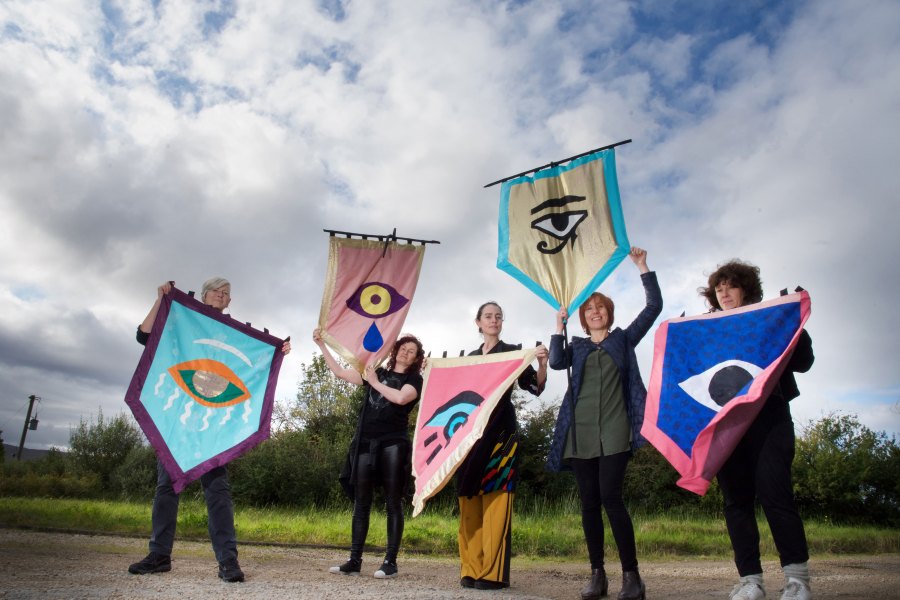
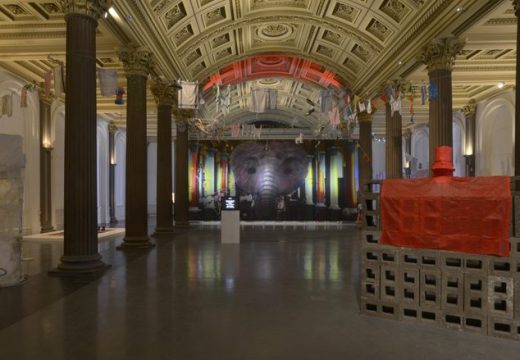
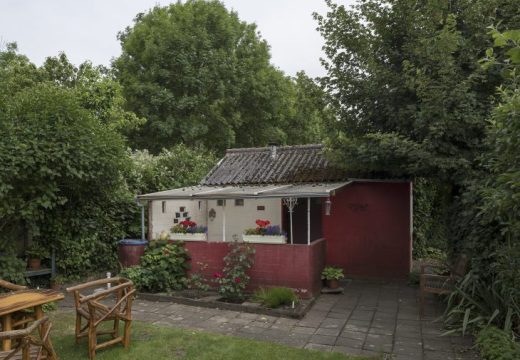
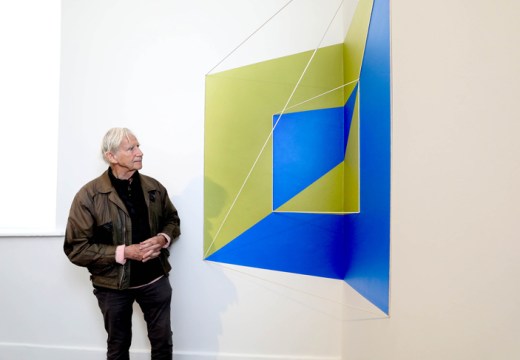









![Masterpiece [Re]discovery 2022. Photo: Ben Fisher Photography, courtesy of Masterpiece London](http://www.apollo-magazine.com/wp-content/uploads/2022/07/MPL2022_4263.jpg)
Suzanne Valadon’s shifting gaze